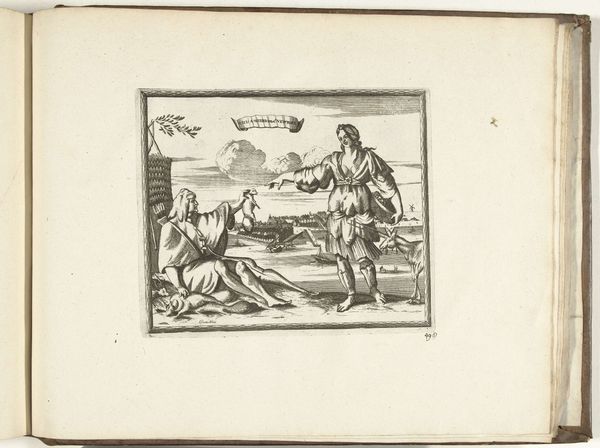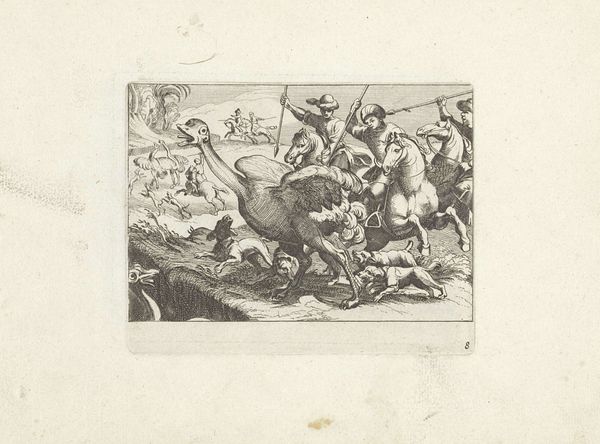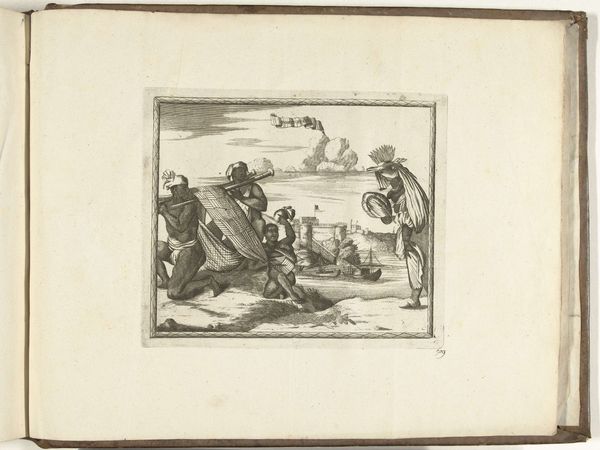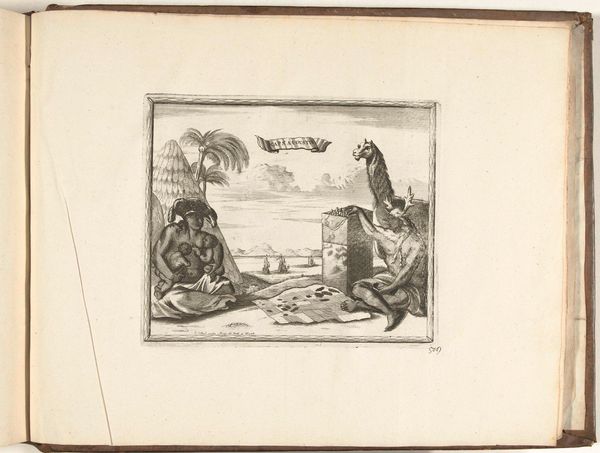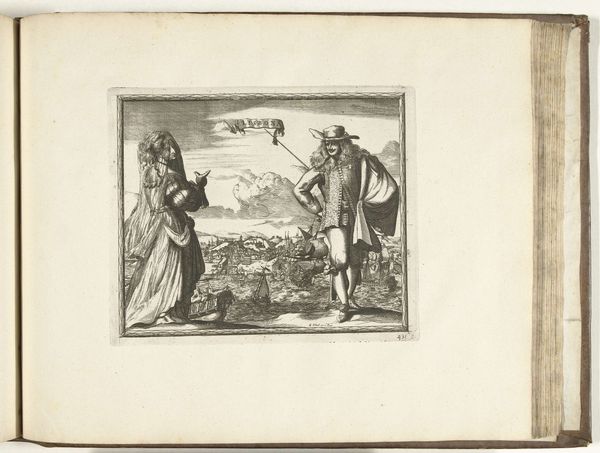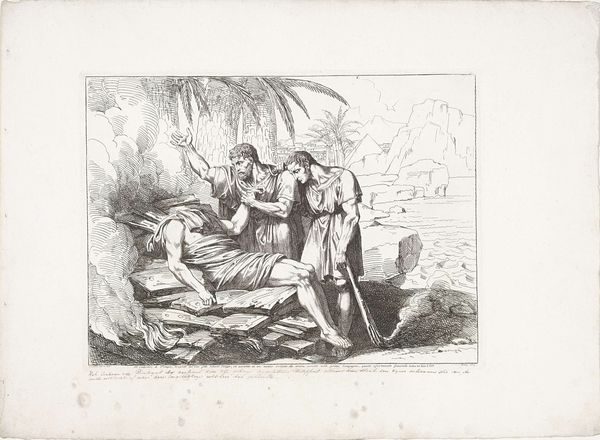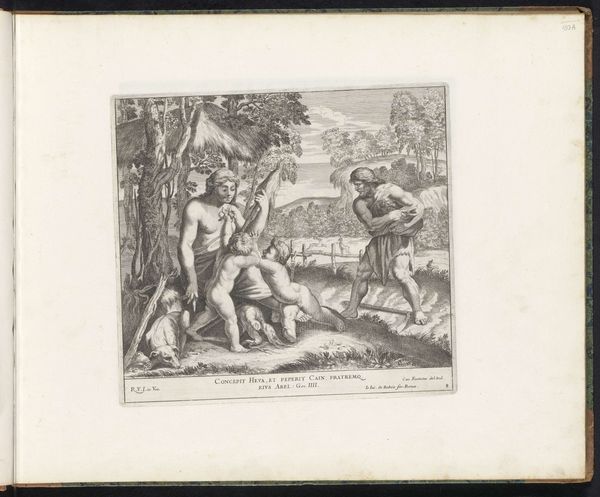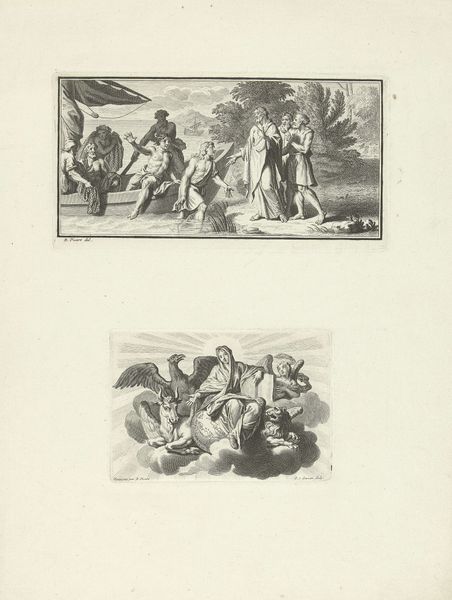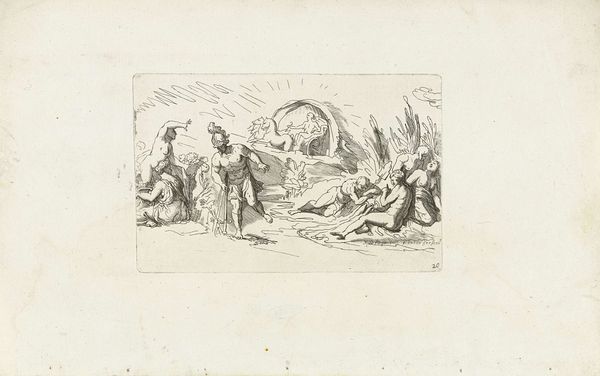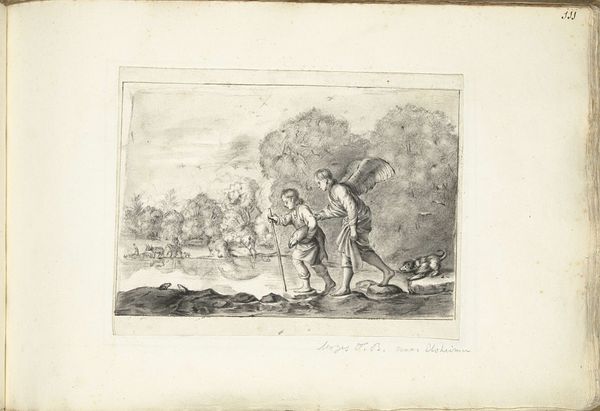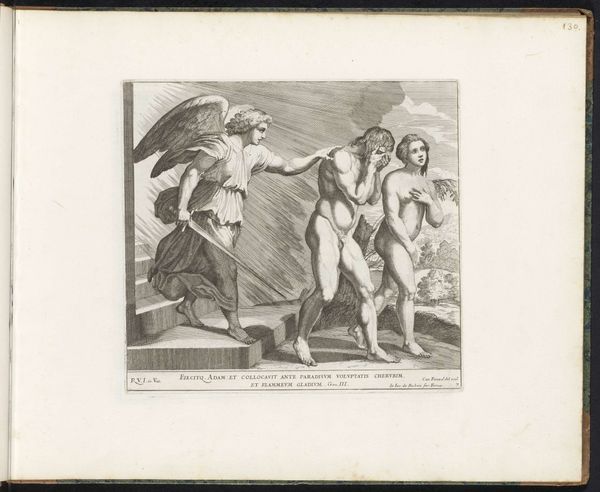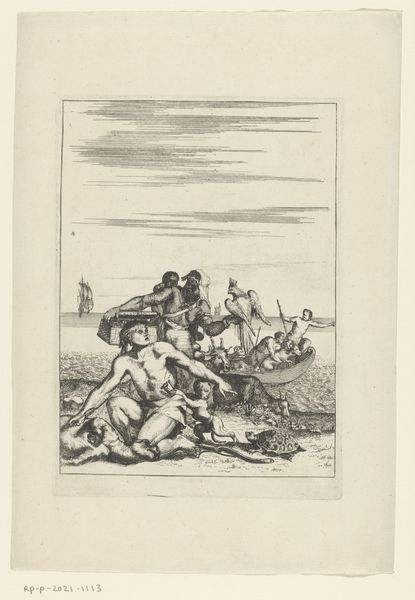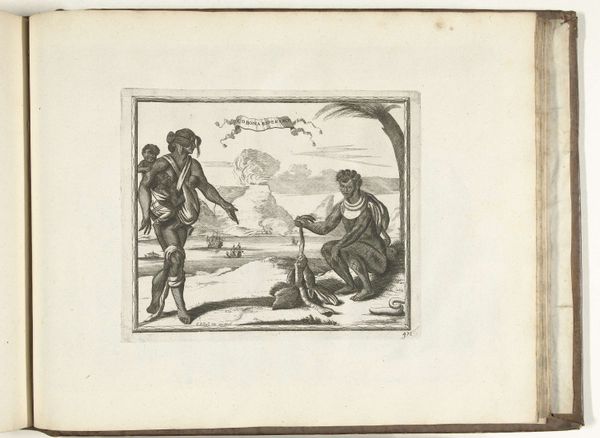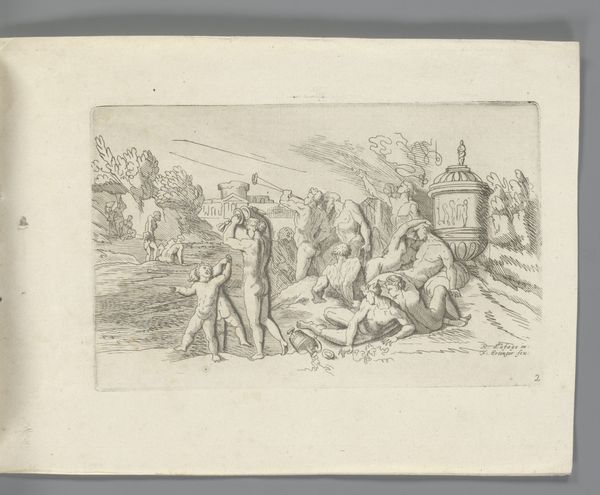
print, engraving
#
dutch-golden-age
# print
#
landscape
#
figuration
#
genre-painting
#
history-painting
#
engraving
Dimensions: height 180 mm, width 215 mm
Copyright: Rijks Museum: Open Domain
Editor: Here we have "Inwoners van Fort Dauphin, 1726" by Carel Allard, a print housed in the Rijksmuseum. My initial reaction is one of slight discomfort, noticing the almost detached way the figures are presented in the landscape. What symbols or imagery stand out to you? Curator: What strikes me immediately are the layers of meaning embedded in what seems, at first glance, to be a simple genre scene. This image is not merely a record of daily life in Fort Dauphin, now known as Tôlanaro, Madagascar, but a potent representation loaded with colonial power dynamics. The depiction of the "inwoners" – inhabitants – themselves, and the details in their attire, their activities, become signifiers. Editor: Signifiers of what, exactly? Curator: Consider the image’s setting. The "landscape," which places these figures in the colony’s space. Notice how they’re arranged in relation to the water, or structures. Consider the man with the bull - what do those robes say, and how do they compare to the attire of the figure holding what appears to be entrails? These details are all strategically deployed to convey certain ideas about civility, savagery, and the European gaze itself. Editor: So, you are suggesting it’s not just a factual representation, but one filtered through a European perspective, laden with the biases of the time? Curator: Precisely. The act of representing, in itself, carries immense power. Look closely – what stories do you think those objects or the animal can communicate beyond this printed surface? It asks us to consider whose stories are being told and whose are being omitted or misrepresented in this historical record. The composition uses a certain language; understanding the language reveals hidden meaning. Editor: That's a powerful reminder of how deeply embedded cultural assumptions can be, even in seemingly straightforward depictions. It definitely shifts how I see this piece, and historical images in general. Curator: Indeed. The emotional and psychological weight of these images evolves and shifts as time unfolds and perspectives change. Examining it from that vantage gives it greater value for us now.
Comments
No comments
Be the first to comment and join the conversation on the ultimate creative platform.
